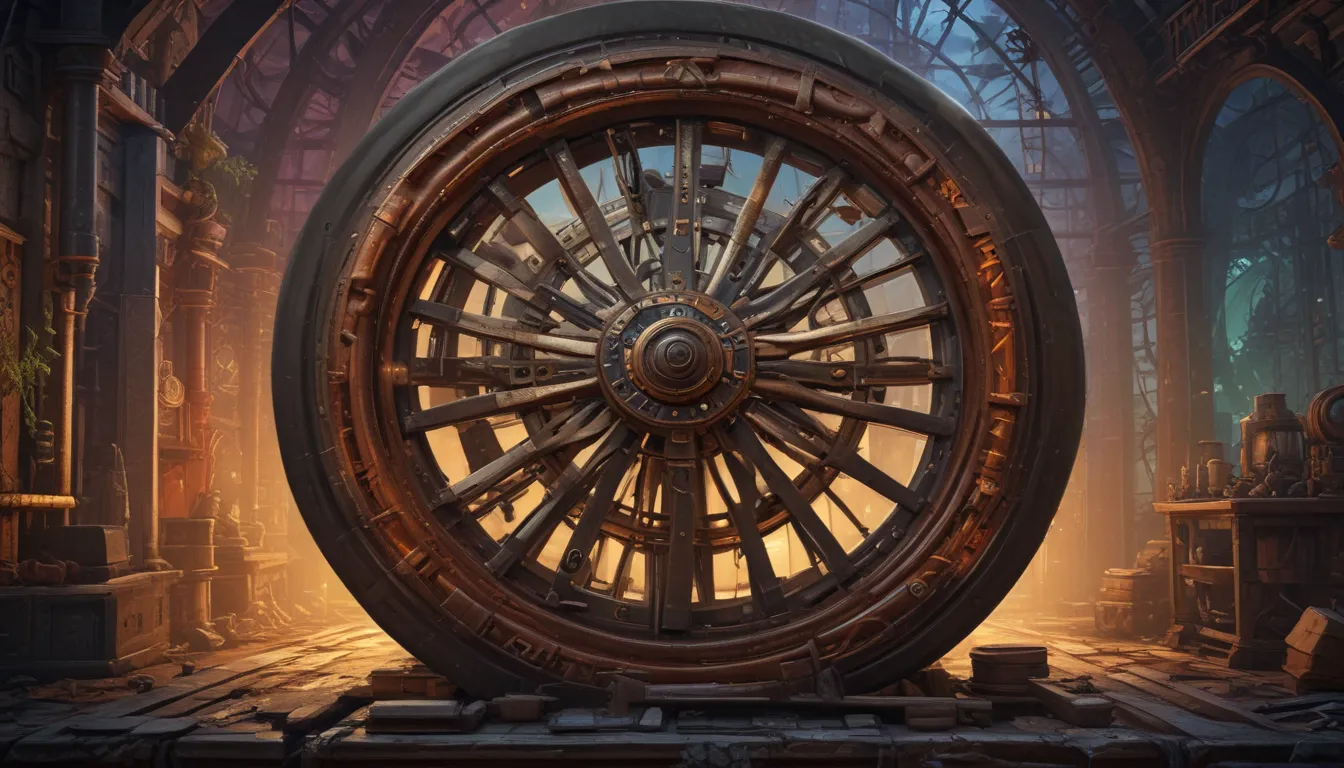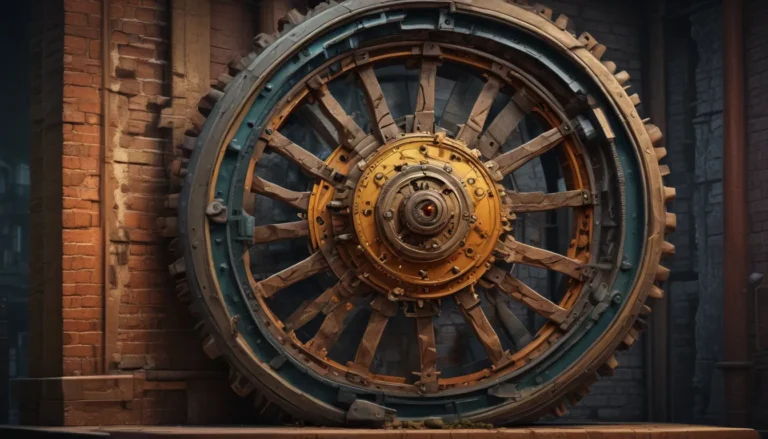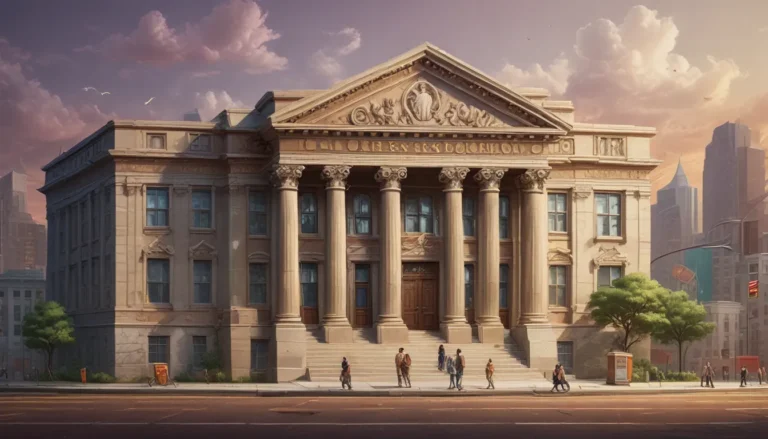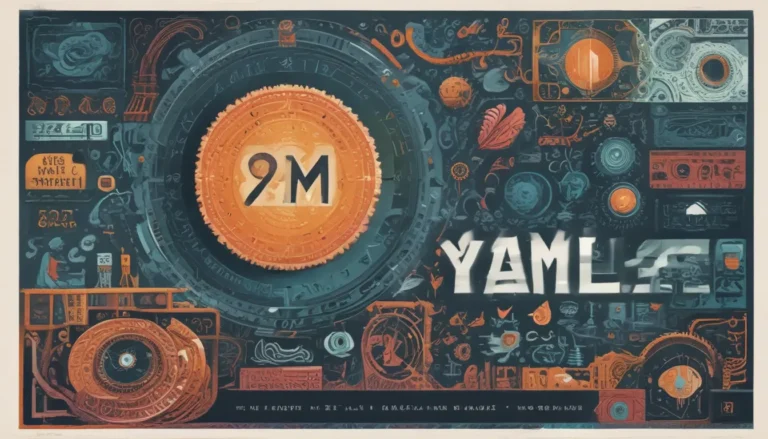A Note About Images: The images used in our articles are for illustration purposes only and may not exactly match the content. They are meant to engage readers, but the text should be relied upon for accurate information.
Welcome to a captivating journey through the world of wheels! These simple yet revolutionary inventions have shaped human civilization in ways we could never have imagined. From their humble beginnings to their modern-day applications, wheels have left an indelible mark on our history and continue to drive innovation forward.
In this article, we’ll explore 10 fascinating facts about wheels that will leave you in awe of their impact and significance. So, buckle up and get ready to roll through time as we uncover the incredible story of one of humanity’s greatest inventions!
1. The Ancient Origins of the Wheel
The wheel’s story begins in ancient Mesopotamia, around 3500 BCE. Surprisingly, its first application wasn’t for transportation but as a potter’s tool. This humble start marked the dawn of a revolutionary era, with the wheel’s potential just beginning to unfold.
Fun fact: The wheel’s invention predates written language by over a thousand years!
2. The Wheelbarrow: A Game-Changer in History
During the Han Dynasty in ancient China, a brilliant invention emerged that would revolutionize labor practices: the wheelbarrow. This simple yet versatile tool transformed agriculture and construction by making it easier to transport heavy loads.
- Increased efficiency in farming
- Improved construction techniques
- Paved the way for more productive labor practices
3. Wheels Revolutionize Transportation
One of the wheel’s most transformative applications has been in transportation. The development of wheeled vehicles, such as chariots and carts, revolutionized the movement of goods and people.
Impact of wheeled transportation:
- Expanded trade networks
- Facilitated the growth of civilizations
- Enabled exploration of new territories
4. The Water Wheel: Harnessing Nature’s Power
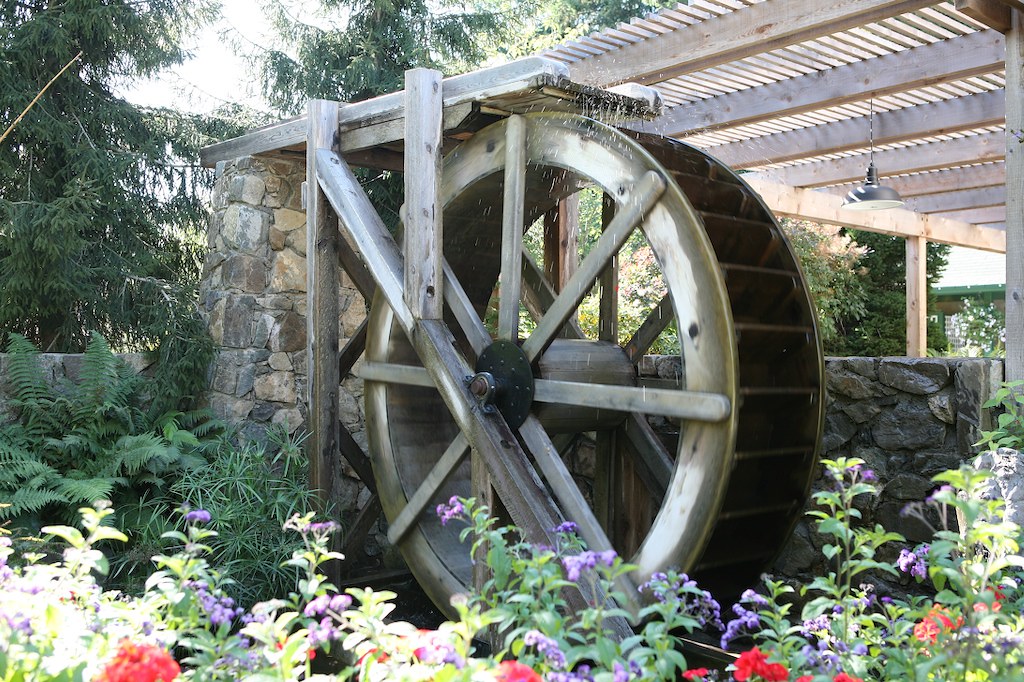
In ancient Greece, the ingenious invention of the water wheel changed the course of history. Powered by flowing or falling water, this device performed a myriad of tasks:
- Grinding grain
- Sawing wood
- Operating machinery
The water wheel laid the foundation for the modern water turbine, showcasing the enduring legacy of the wheel’s ingenuity.
5. Wheels in Astronomy: Tracking the Stars
Believe it or not, the wheel’s influence extends even to the field of astronomy. The “equatorial mount” telescope mount uses a wheel-like mechanism to track celestial objects accurately. This innovation compensates for Earth’s rotation, allowing astronomers to capture detailed images of the night sky and unlock the mysteries of the universe.
6. The Ferris Wheel: A Symbol of Wonder and Innovation

Step right up to experience the thrill of the Ferris wheel! Invented by George Washington Gale Ferris Jr., this iconic amusement park ride made its debut at the 1893 World’s Columbian Exposition in Chicago.
Ferris wheel facts:
- Offers breathtaking views from great heights
- Has become a staple of amusement parks worldwide
- Symbolizes human ingenuity and the pursuit of excitement
7. The Steering Wheel: Navigating the Roads of Progress
The steering wheel, a staple of automobiles, has revolutionized the way we navigate roads. Introduced in the late 19th century, it significantly enhanced the maneuverability and safety of vehicles.
Impact of the steering wheel:
- Improved vehicle control
- Enhanced driver safety
- Became a symbol of freedom and the open road
8. The Wheel of Fortune: A Metaphor for Life

The concept of the “Wheel of Fortune” has deep roots in ancient philosophy and mythology. This metaphorical wheel symbolizes the unpredictable and cyclic nature of life, reflecting the inherent uncertainties and opportunities that shape our existence.
Cultural significance:
- Found in literature and art
- Used in popular culture
- Represents the ever-changing nature of fortune and fate
9. Wheels: The Unsung Heroes of Machinery
From clocks and watches to industrial equipment, wheels play a crucial role in various machinery. These unsung heroes ensure precise movement and synchronization, quietly supporting the intricate workings of technology that keep our world running smoothly.
Applications of wheels in machinery:
- Timekeeping devices
- Manufacturing equipment
- Robotics and automation
10. The Wheel as a Symbol of Progress and Innovation
Beyond its practical applications, the wheel carries significant symbolic weight. It represents progress, innovation, and the cyclical nature of life. Across cultures, the wheel serves as a potent symbol, conveying ideas of motion, change, and the interconnectedness of all things.
FAQ: Frequently Asked Questions About Wheels
Q: When was the wheel invented?
A: The wheel is believed to have been invented around 3500 BCE in ancient Mesopotamia.
Q: What was the first use of the wheel?
A: Surprisingly, the wheel was first used as a potter’s tool for crafting pottery, not for transportation.
Q: How did the wheel impact trade?
A: The wheel revolutionized trade by enabling the development of wheeled vehicles, which made it easier to transport goods over long distances.
Q: Who invented the Ferris wheel?
A: The Ferris wheel was invented by George Washington Gale Ferris Jr. and debuted at the 1893 World’s Columbian Exposition in Chicago.
Q: How has the wheel influenced modern technology?
A: The wheel’s influence can be seen in various technologies, from transportation and machinery to astronomy and timekeeping devices.
Conclusion: The Endless Legacy of the Wheel
As we conclude our journey through the fascinating world of wheels, let’s take a moment to marvel at the enduring legacy of this remarkable invention. From the humble potter’s wheel to the grand Ferris wheel, the wheel’s impact on transportation, machinery, and countless other domains is immeasurable.
The wheel’s story is a testament to human ingenuity and our ability to transform simple ideas into world-changing innovations. As we continue to evolve and innovate, let us never forget the humble wheel and the profound ways in which it has shaped our world.
The next time you see a wheel – whether it’s on a car, a bicycle, or even a child’s toy – take a moment to appreciate its rich history and the incredible journey it has taken through time. Who knows what new applications and innovations the wheel might inspire in the future? The possibilities are as endless as the wheel itself, continuously turning and propelling us towards new horizons and endless possibilities.
